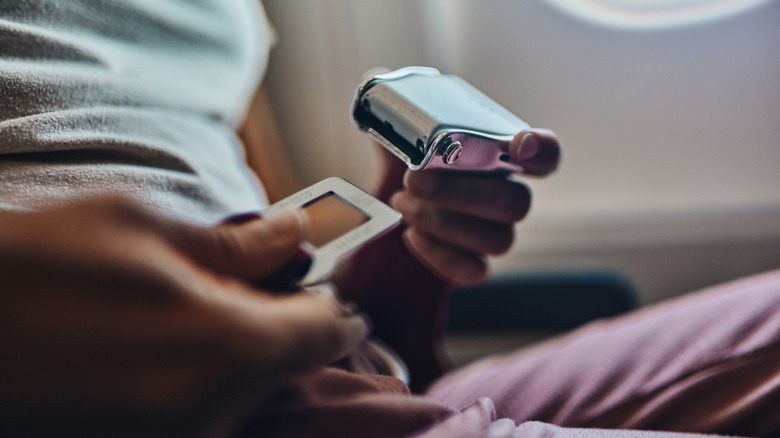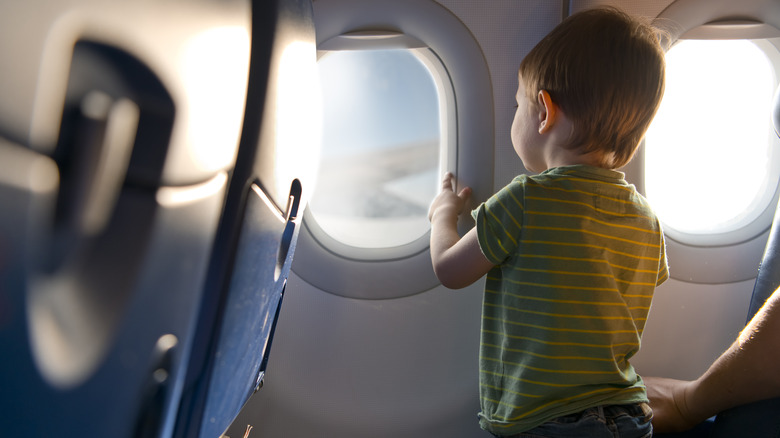Flying is much safer than driving, statistically speaking, but that doesn’t mean accidents don’t happen. Things can go awry and parts of the plane can break, as happened during a January 2024 Alaska Airlines flight. According to a CBS News report, a door plug blew off, leaving a gaping hole in the aircraft where the wall panel would usually be. Items got sucked out of the plane, including a phone and a passenger’s shirt right off his back, but thankfully there were no fatalities.
Still, not everyone is lucky enough to survive such a horrific incident. A woman died in 2018 after a piece of the plane engine broke her window during a Southwest Airlines flight. Years earlier in 1989, the side of a United Airlines plane detached mid-flight, killing nine passengers.
Despite these harrowing examples, a few tips can make surviving such a catastrophic event more likely. A pilot named Harrison Murray, who goes by @pilot_geeza on TikTok, explains the protocol passengers and flight crew should follow in a viral video. Murray begins the clip by pointing out that the first thing to occur right after a window failure is “rapid depressurization” in the cabin. This is typically followed by loud noises, gusts of cold air, and abdominal discomfort. Passengers will then be alerted to put on their oxygen masks, a step that shouldn’t be taken lightly. As the pilot says, passengers will likely lose consciousness within 30 to 90 seconds if they don’t use an oxygen mask for air.
Wear a seatbelt and choose your seat wisely

Putting on an oxygen mask as soon as an emergency strikes is one of the best ways to survive a mid-flight window malfunction, but that’s not the only thing you can do to stay safe. In a separate clip on TikTok, Harrison Murray suggests keeping your seatbelt fastened throughout your flight to avoid being swept out of a broken window or panel — and that includes times when the seatbelt sign is switched off. That tip may be the reason why no seated passengers died after the roof ripped off an Aloha Airlines plane in 1988. Everyone on board was said to have been wearing their seatbelts, except the flight attendants, who were serving drinks. Flight attendant Clarabelle Lansing was tragically sucked out of the aircraft during the incident, never to be found again.
Another preventative measure is to not book the window seat on your next flight. While Murray jokes in his video that he would have his wife sit next to the window to protect himself, the reality is that passengers near broken windows are, in fact, more likely to suffer injuries than those seated further away. During the 2018 Southwest window accident, the sole casualty was situated just next to the smashed window. She was partially pushed out of the hole, and though fellow passengers managed to pull her back in, she had already died due to the impact.
The good news: broken windows are rare

Though it’s always a good idea to keep safety tips in mind, know that your chances of being on a flight with a broken window are slim. As aviation consultant David Haward told The Guardian, each incident is essentially a freak accident that occurred due to rare and unforeseen misfortune. “This is not a frequent danger,” he assured. “A lot of research work was done in the ’40s and ’50s to make sure it wasn’t a danger – double-skinned windows and precautions like that.” Looking at an example from recent history, Haward noted that the 2018 incident only occurred because the engine broke — not because the window itself was flawed.
As for the 2024 Alaska Airlines flight, numerous Boeing 737 Max 9s — the plane involved in the event — were grounded and subject to additional inspections before they were allowed to fly again. According to an Alaska Airlines statement, technicians found loose bolts on some aircraft, a discovery that will hopefully prevent future accidents from happening.

